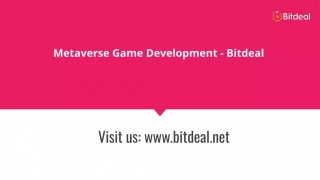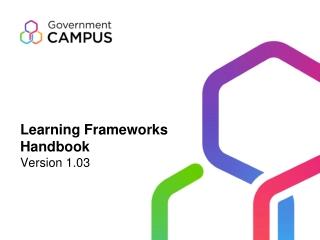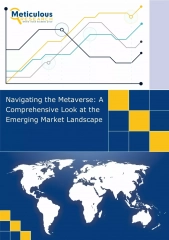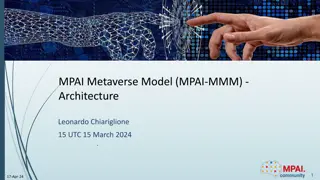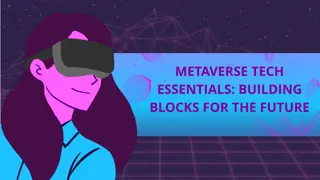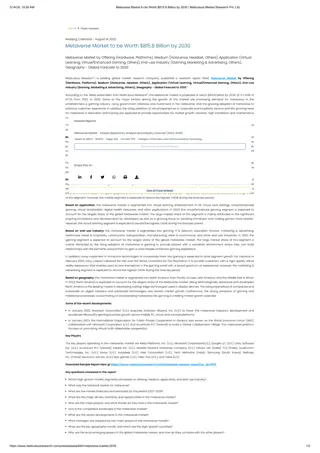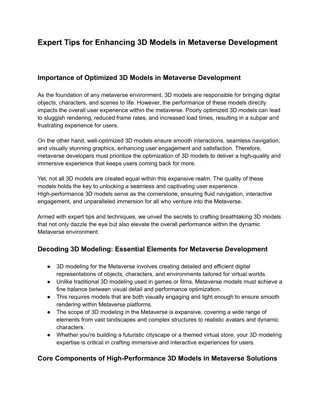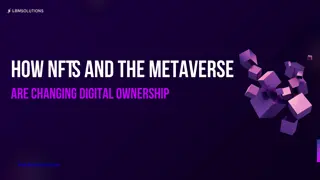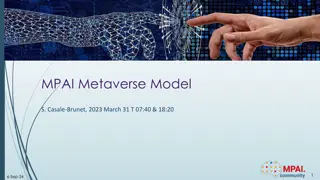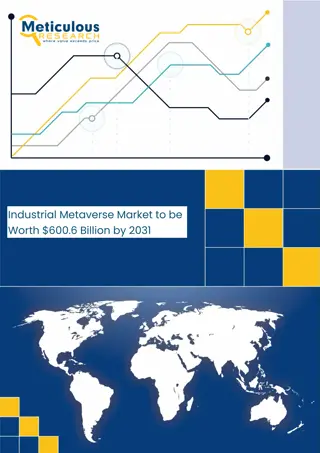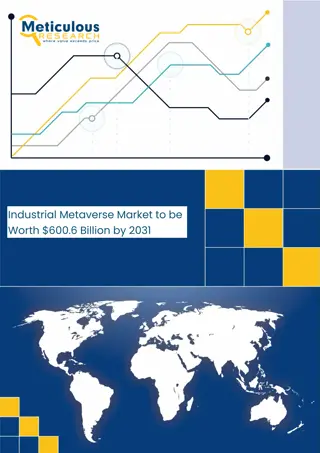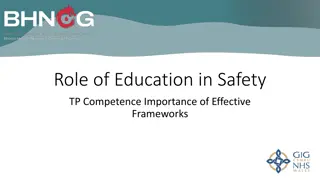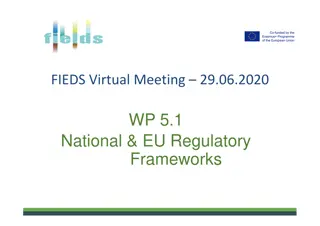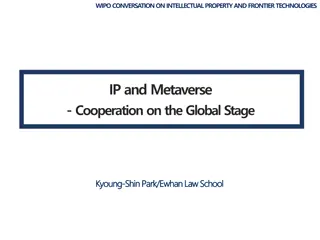
Open-Source Metaverse Tools Top 10 Frameworks
Explore the Top 10 Open-Source Metaverse Frameworks that empower developers to build immersive virtual worlds, integrate blockchain, and enhance AI-driven interactions. These tools offer flexibility, scalability, and community support to shape the fu
Download Presentation

Please find below an Image/Link to download the presentation.
The content on the website is provided AS IS for your information and personal use only. It may not be sold, licensed, or shared on other websites without obtaining consent from the author. If you encounter any issues during the download, it is possible that the publisher has removed the file from their server.
You are allowed to download the files provided on this website for personal or commercial use, subject to the condition that they are used lawfully. All files are the property of their respective owners.
The content on the website is provided AS IS for your information and personal use only. It may not be sold, licensed, or shared on other websites without obtaining consent from the author.
E N D
Presentation Transcript
Open-Source Metaverse Tools: Top 10 Frameworks In recent years, there has been a considerable surge of interest in the metaverse concept. It represents a virtual realm where individuals can engage with each other and digital elements in real-time, effectively blurring the boundaries between the physical and virtual realms. Open-source metaverse tools play a crucial role in the development and expansion of these virtual environments. In this article, we will explore the top 10 frameworks that empower developers to create immersive metaverse experiences. Introduction to the Metaverse The metaverse is a virtual reality space where users can explore, interact, and create content. It offers a multi-dimensional experience that combines augmented reality (AR), virtual reality (VR), and mixed reality (MR) technologies. Users can connect with each other, engage in various activities, and even build their virtual worlds.
Importance of Open-Source Metaverse Tools Open-source metaverse tools play a crucial role in democratizing the development of the metaverse. By providing free access to source code and a collaborative environment, these tools enable developers to build and customize virtual experiences with ease. They foster innovation and community-driven development and create opportunities for a diverse range of users to contribute to the evolution of the metaverse. Criteria for Selecting Metaverse Frameworks When selecting metaverse frameworks, developers consider several key criteria: Scalability: The framework should support large-scale virtual environments and accommodate a high number of concurrent users. Interoperability: It should allow interoperability between different platforms and devices, ensuring a seamless user experience. Customization: The framework should provide flexibility and customization options to suit various use cases and requirements. Documentation and Community: A strong community and comprehensive documentation are vital for developers to learn, troubleshoot, and collaborate effectively. Security and Privacy: As the metaverse involves personal data and transactions, frameworks should prioritize security measures to protect user information.
Top 10 Open-Source Metaverse Frameworks 1: Framework 1 Framework 1 is a robust open-source metaverse tool that offers a wide range of features for creating immersive virtual experiences. It supports real-time collaboration, customizable avatars, and seamless integration with popular VR and AR devices. 2: Framework 2 Framework 2 focuses on ease of use and simplicity. It provides an intuitive interface and drag-and-drop functionality, making it accessible to developers of all skill levels. Additionally, the framework provides comprehensive documentation and fosters a supportive community. 3: Framework 3 Framework 3 is known for its scalability and performance. It can handle large- scale virtual environments with a high number of concurrent users. The framework prioritizes optimization techniques to ensure smooth and immersive user experiences. 4: Framework 4 Framework 4 emphasises interoperability and cross-platform compatibility. It enables users to access virtual experiences from various devices, including desktops, mobile devices, and VR headsets. The framework also supports integration with popular social media platforms. 5: Framework 5 Framework 5 focuses on customization and flexibility. It provides an extensive set of tools and APIs that allow developers to create unique virtual worlds tailored to their specific needs. The framework also supports third-party plugin integration for added functionality. 6: Framework 6 Framework 6 offers a comprehensive suite of development tools for building complex metaverse applications. It includes features such as physics
simulations, realistic lighting effects, and advanced audio systems. The framework also provides extensive documentation and tutorials for developers. 7: Framework 7 Framework 7 prioritises security and privacy. It implements robust encryption algorithms and authentication mechanisms to protect user data and transactions. The framework also ensures compliance with data protection regulations, providing users with a secure environment. 8: Framework 8 Framework 8 is renowned for its vibrant community and active developer ecosystem. It offers collaborative spaces, forums, and knowledge-sharing platforms, enabling developers to learn, collaborate, and showcase their creations. The framework also organises regular hackathons and events to promote innovation. 9: Framework 9 Framework 9 focuses on social interaction and engagement. It provides features like real-time chat, multiplayer games, and virtual events, fostering a sense of community within the metaverse. The framework also supports integration with popular social networking platforms. 10: Framework 10 Framework 10 stands out for its extensive plugin ecosystem. It offers a wide range of plugins developed by the community, enhancing the framework s functionality and allowing developers to extend the capabilities of their virtual worlds. Comparison of the Frameworks Each of the top 10 open-source metaverse frameworks has its strengths and unique features. Here s a brief comparison to help you choose the right one for your project: Framework Framework 1 Framework 2 Framework 3 Scalability High Medium High Interoperability Yes Yes Yes Customization Yes Yes Yes
Framework Framework 4 Framework 5 Framework 6 Framework 7 Framework 8 Framework 9 Framework 10 Scalability Medium High High Medium Medium High Medium Interoperability Yes Yes Yes Yes Yes Yes Yes Customization Yes Yes Yes Yes Yes Yes Yes Future of Open-Source Metaverse Tools As the metaverse continues to evolve and gain prominence, open-source metaverse tools will play a crucial role in shaping its future. These tools enable developers worldwide to contribute to the growth and innovation of the metaverse. With advancements in technologies like artificial intelligence, blockchain, and spatial computing, the possibilities for the metaverse are boundless. Conclusion Open-source metaverse tools are the foundation of the virtual worlds we explore today. The top 10 frameworks mentioned in this article provide developers with the means to create immersive experiences that redefine how we connect, interact, and collaborate in the digital realm. As the metaverse expands, these tools will continue to evolve, enabling us to unlock new possibilities and push the boundaries of virtual reality.



